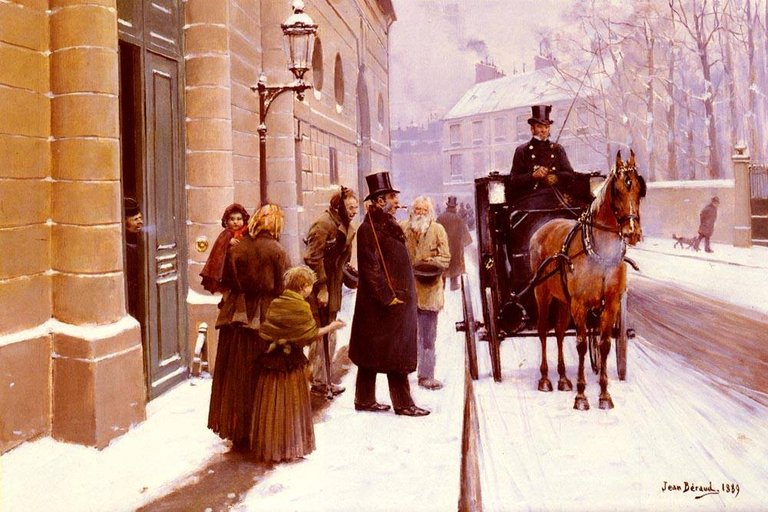The intensification of the process of the disintegration of feudal orders under the influence of the initial capitalist accumulation caused a considerable shift in social groupings and aggravated class contradictions. From the middle and until the end of the XVI century. Almost continuously there were peasant disturbances (mainly in the northern and south-western part of the country), expanding from decade to decade, and the struggle against the state fiscal played an increasingly important role in these unrest.
Even greater unrest was engulfed by French cities. Here the main mass of dissatisfied were apprentices, laborers and lower layers of artisans. The largest of these movements - the strike of printing workers in Paris and Lyon in 1539 - gave rise to the first in France law against workers - the edict of Wheeler-Cotre in 1539, which banned strikes and professional associations of workers - companions. Nevertheless, the troubles of the urban poor did not stop.
The public lower classes of the industrial cities of France were the first to be influenced by the ideas of Protestantism coming from Germany. Since the 20-ies. until the middle of the XVI century. Lutheranism was so widespread among the urban poor that it seriously alarmed the Catholic clergy and royal power. Since the 1940s, the Protestant movement has already been subjected to brutal persecution, which forced most of the Protestants to emigrate to Germany and Holland.
At the same time, there was a significant change in the ratio of the forces of various groups of propertied classes.
In connection with the commencement of the transition to manufactory production, a layer of industrial entrepreneurs of the capitalist type has already been formed. But still the economic preponderance persisted for the merchants, which reigned not only in the sphere of trade exchange and monetary speculation, but also in the sphere of industrial production, where it acted as the exploiter of small artisans and domestic workers.
Along with economic growth, the formation of the bourgeoisie in the class also took place. Separate local groupings of the bourgeoisie were liberated from provincial and municipal limitations and gradually recognized their social unity on a national scale. However, in the XVI century. this transformation of the bourgeoisie from the medieval third estate into a class made only the first steps. The bourgeoisie was more inclined to oppose to the tax claims of the feudal state its city liberties and privileges of feudal origin than the anti-feudal principles of tax equality.
It is extremely characteristic that the bourgeoisie of the sixteenth century. was looking for a way out of its disenfranchised and oppressed position, not so much in the struggle for its general class interests against estate privileges and feudal orders, as in striving to join these privileges and adapt to these orders by acquiring noble titles, estates and posts.
The rich upper classes of the bourgeoisie were a constant reservoir for replenishing the ranks of two socially socially hybrid social groups - urban patricians and "mantle people", royal officials. The rapid economic and political strengthening of these two social groups represents one of the most distinctive and significant features of the historical development of France in the sixteenth and seventeenth centuries.
In the XV century. urban patrician and "people of the mantle" began to clean up the hands of the noble fiefs. In the XVI century. In addition, they energetically began to buy up peasant holdings (allotments).
Simultaneously with the land wealth, the bourgeois aristocracy appropriated to itself and privileges, which until then were the exclusive property of the pillar nobility. The easiest way to this was to occupy positions that gave noble ranks or privileges close to the nobility. These positions were in the XVI century. the subject of open purchase and sale.
Together with the increase in the economic and social status of the urban patriciate and the "people of the mantle," their political influence also grew. During the XVI century. they won a predominant role in city magistrates, pushing the merchants to the background, and concentrated in their hands all the links of the bureaucratic mechanism in the center and in the localities - in parliaments, courts and financial institutions. They also achieved a prominent role in the highest state authority - in the royal council.


You got a 11.36% upvote from @upmewhale courtesy of @pioner888777! Earn 90% daily earning payout by delegating SP to @upmewhale.
I like your post, I see that you love history as well as I, I support you
thank you for share @pioner888777